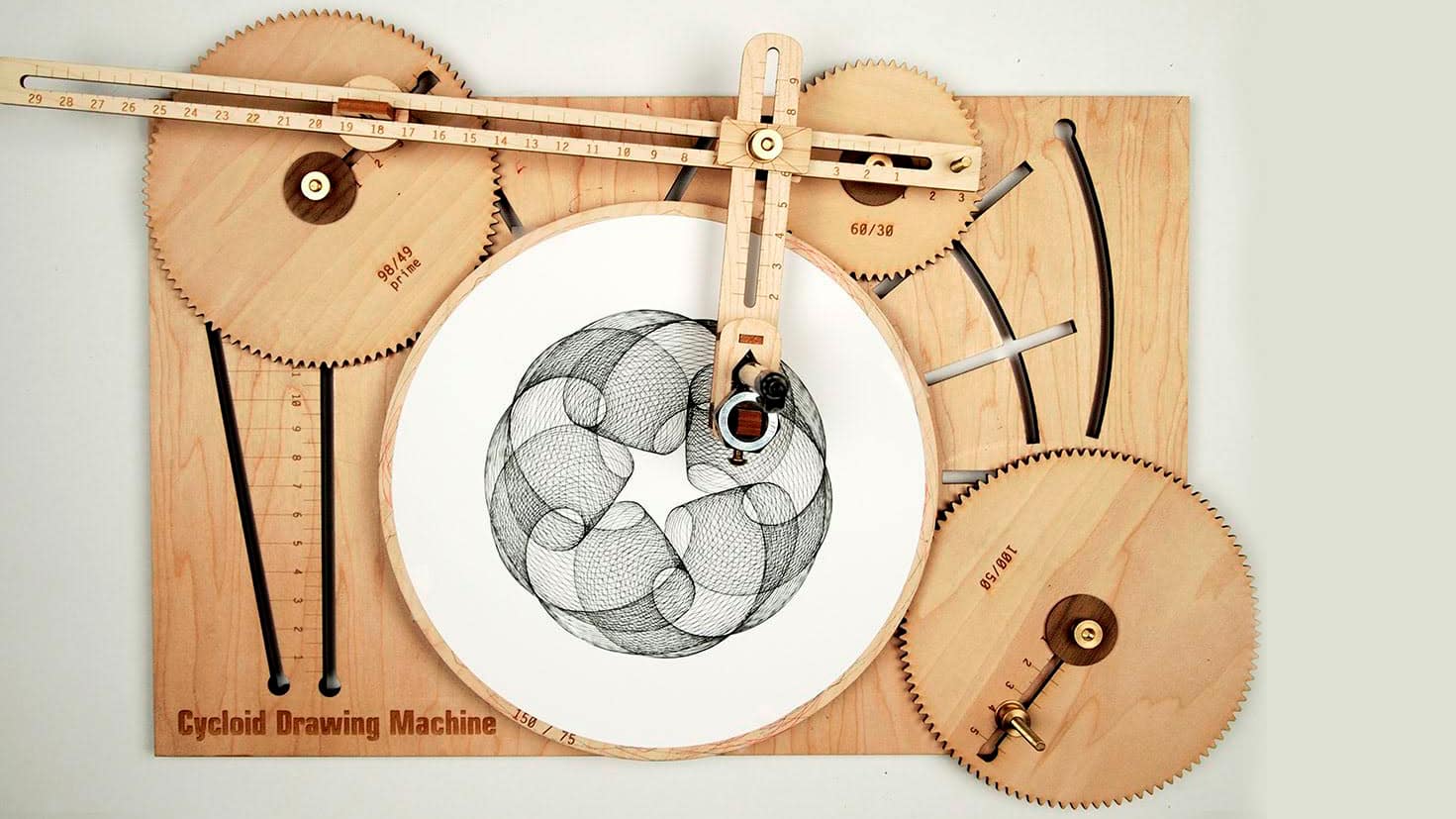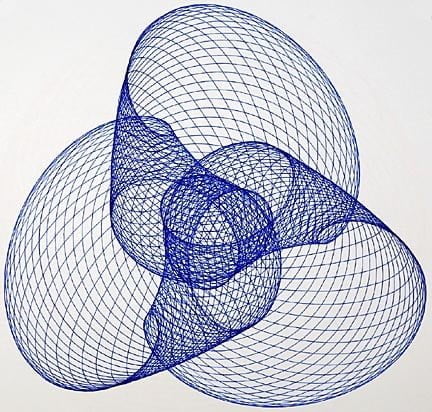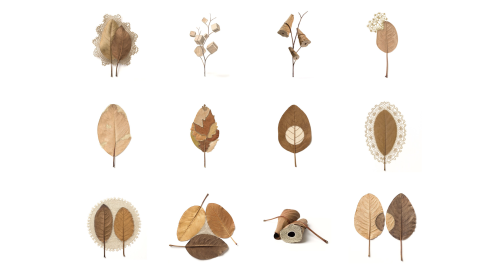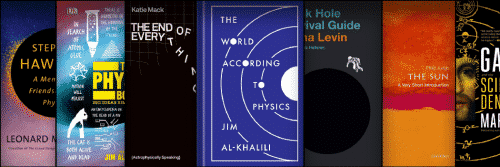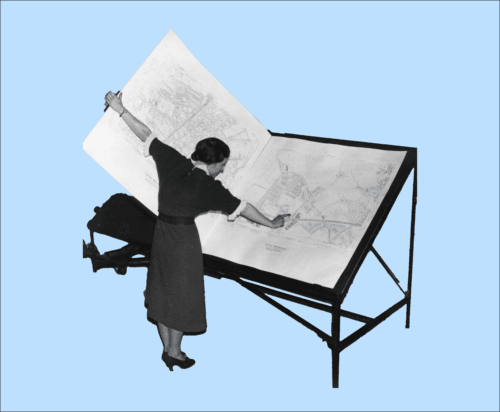I’m going to be saying many good things about Mr. Freedman’s drawing machine, so I need to clarify at the start that I have not invested in his enterprise, I do not receive a commission on any sales, he is not paying me to post this review. He has not asked me to do so. Mr. Freedman is not a friend. I have never met the gentleman. As an engineer, I’m doing this because I appreciate and value outstanding design and superior manufacturing. This drawing machine has both of these attributes in abundance and, as such, deserves to be acknowledged.
You may not be able to judge a book by its cover, but in my experience, you usually can guess the quality of a product by how carefully it was packed for shipment. In the case of this drawing machine, I discovered that it had been packaged for shipment more carefully than anything else I have ever received through the mail. It was double boxed in top quality, heavy-duty boxes. The inner box wasn’t merely dropped in the outer box, then the voids filled with packing popcorn. Instead, a dense layer of popcorn was laid down; first, the inner box centered on top of it, then more popcorn was carefully packed in around the sides and top. The packing density was such that after several days in shipment when I opened the outer box, the inner box was still perfectly centered in the popcorn and fully cushioned on all six sides. This level of packing hinted that something of extreme quality was inside… and it was.
The inner box was sized perfectly to hold the drawing machine so that it couldn’t shift around and be damaged.

An additional benefit is that the inner box turned out to be perfect for long term storage.
When the inner box was opened, here’s what I saw:

To an engineer with an orderly frame of mind, this was nothing short of beautiful. Mr. Freedman’s cycloid drawing machine comes with a specially designed organizer that holds all the gears and small parts in a safe and orderly manner. As I inspected it, I discovered that every single gear and part was perfect. There wasn’t a single missing, scratched, dented, or broken piece. That demonstrates the very highest standard for the pride of construction.

Lifting out the organizer discloses the actual cycloid drawing machine. It was already assembled in the first drawing configuration suggested in the manual. All that was needed was to add two bolts and the machine was operational in less than one minute.

Underneath the drawing machine were two more main gears. The one on the machine was a 150-tooth gear. The two under it were 120 and 144-tooth gears.

The manual that came with the drawing machine was nothing less that the very best, easiest to understand manual for any device I have ever had. Besides complete explanations of how to machine works and the usual parts lists and descriptions, it features detailed suggestions for five different configurations, each of which is explained three different ways: with text, through a menu format, and with sharp, full color pictures. The configurations are ordered in increasing complexity so that working through them is like working through a carefully thought-out tutorial that’s both informative and fun.

As I began creating my first drawing, I got another pleasant surprise. Although the cycloid drawing machine is constructed of the finest materials, it is still a wooden machine. I expected there to be a breaking-in period to give any rough edges a chance to wear off. There wasn’t. My machine ran perfectly from the very first turn. It ran as smoothly then as it did after many hours of use.
With 21 gears, half a dozen pen holder arms and an extremely adaptable base, this drawing machine can be configured in an enormous rates of setups: everything from the very simplest above, which produces spirograph-like drawings such as these:
…to very complicated systems like the following:

Once you’ve used Mr. Freedman’s cycloid drawing machine for a while, you’ll develop an almost overwhelming sense of appreciation for the incredible range of drawings it can create. For example, consider the following configuration, which is the second simplestsetup suggested in the manual:

By merely adding two gears, the image has changed from a simple spirograph-like pattern, to a beautifully complex design that, to me, looks like wrapping ribbon entwined in a mobius strip. Now consider: the design can be altered by repositioning the pen back and forth along the length of the long pen holder arm. It can also be altered by changing the length of the shorter pen arm. The radius of the drive bolt on the right hand drive gear can be changed. The radius of the fulcrum pivot on the left gear can be changed. finally, the gears themselves can be changed. Each of these will have a profound affect on the resulting drawing. And just when you think you’ve completely mastered this simple configuration…
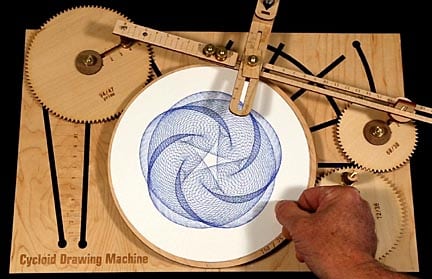
… you can reverse the pen arm so the pivoting fulcrum is now on the right and the drive bolt is on the left (I haven’t repositioned the pen yet to place it on the paper.) and you’ll get an entirely different set of drawings. In effect this one step turns all the previous drawings inside out. So now you get to go through all the changes again and discover an whole new set of patterns. And this is one of the simplest setups.
Considering the wide range of possible configurations possible for this drawing machine, anyone who is fortunate enough to acquire one of these drawing machines will never run out of new patterns to discover.
While this flexibility is one of the great virtues of this drawing machine, it also represents one of its greatest challenges. It’s tempting to start throwing gears on it to see what they do. The problem is that doing so is like parachuting into the middle of an Amazonian jungle. You may find beautiful things, but because you don’t know where you are you can’t have the same appreciation as you would by blazing your own trail to that spot. For this reason I recommend a more structured approach to working with this machine.
Start by selecting a setup. Adjust the pen so that it is as close to the pen holder arm and as far to the right as possible. Make a drawing and move the pen halfway to the left of the maximum range of positions that keep the pen on the paper. Make a second trace then repeat with the pen moved as far to the left as possible. That’s what I did to create the top three images from right to left in the image below.

The drawing machine was setup the same as in the previous image with the exception that the gears were changed to create three-lobed patterns.
The pen was moved back to the right, lowered half of its vertical range down and the right-to-left sequence repeated to create the middle row. The bottom row is the same, with the short pen arm now extended downward to its maximum extent.
What this creates is a matrix of patterns that shows how the image evolves as the pen position is changed.
Don’t expect the changes to follow a simple, predictable pattern. Every once in a while you’ll hit a point where a unique combination of gear ratios and pen position to create a sudden, unexpected pattern. This is one of the joys of this drawing machine: order with the occasional surprise.
A test matrix like this can also be used to fine tune a design. For example: the middle and bottom patterns on the far right were the most interesting to me, but I thought they’d be more attractive if the size of the lobes were the same. By positioning the pen one quarter of the way between the middle and bottom setup, I was able to obtain the following pattern with more equally sized lobes:

Here are a few more examples of how patterns can be manipulated by changing the setup:
Here again is the twisted-ribbon pattern.

By reducing the radius of the drive bolt the width of the ribbon is reduced.

Note that it has the same number lines, they’re just compressed.
The following three images show what can happen as the position of the pen is moved so that it oscillates more closely around the center of the paper:
Here’s another example of the same idea:
The number of lobes a drawing has is determined by the number of teeth in the main gear and the pen driving gear. In the following example the main gear has 150 teeth and the pen driving gear 100 teeth:

To calculate how many lobes to expect, start by factoring the number of teeth in each gear down to their smallest whole factors. For example: 150 = 2 x 3 x 5 x 5 and 100 = 2 x 2 x 5 x 5. The largest common factor for both gears is 2 x 5 x 5 = 50. Divide this into the main gear and you get 150/50 = 3, which tells that this configuration will produce patterns with three lobes.
Switching to 144 and 108-toothed gears gives: 144 = 2 x 2 x 2 x 2 x 3 x 3 and 108 = 2 x 2 x 3 x 3 x 3, which gives a largest common factor of 2 x 2 x 3 x 3 = 36. 144/36 = 4 so there will be four lobes in the pattern.

Using a 120-tooth main gear (120 = 2 x 2 x 2 x 3 x 5) and a 100-tooth pen drive gear (100 = 2 x 2 x 5 x 5) yields a largest common factor of 2 x 2 x 5 = 20. Divide 120 by 20 and you get 6, which means the image should have six lobes.

Note that by keeping the pen positions the same, while the number of lobes increases the basic shape of the lobes doesn’t.
While many of the complex patterns this drawing machine can make are interesting, please don’t ignore the simpler spirograph-type patterns it can also create.
They exhibit such extreme symmetry that they possess a beauty all their own.

Changing the color of the pen can create rainbow-like patterns.
As pretty as these can be, I have to confess that it’s hard not to be seduced by the more abstract images this machine can create.


